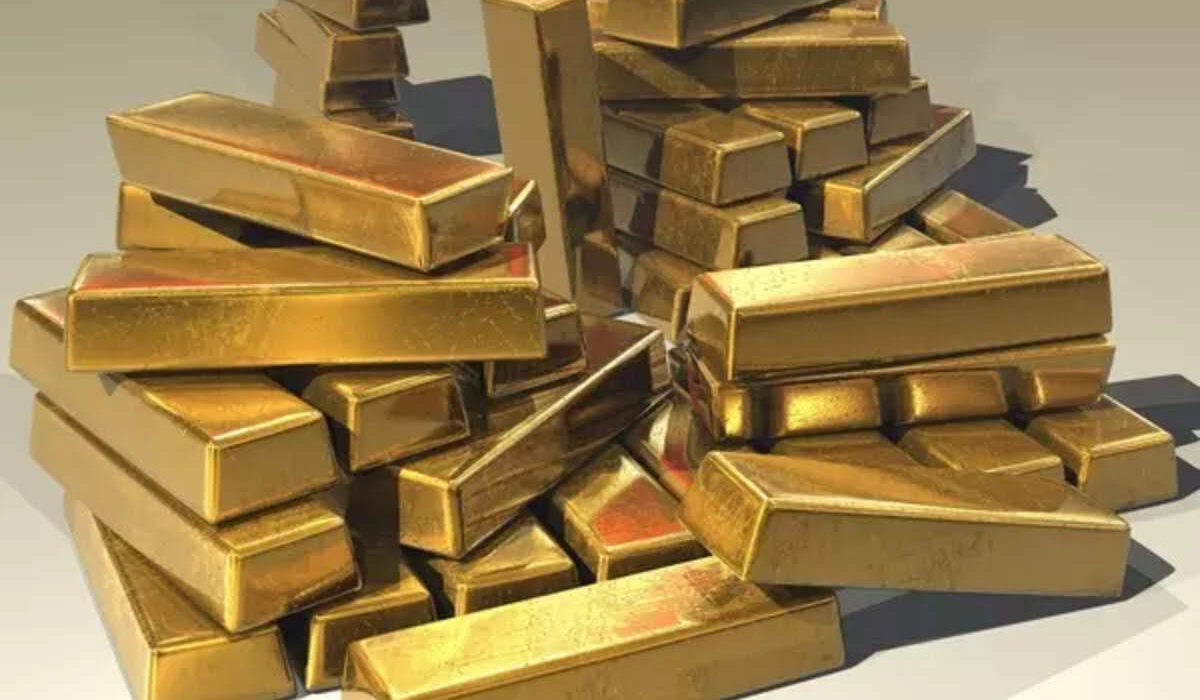Gold is getting so expensive that even China’s central bank stopped buying. Its pause in April was the first such sign of weakness since 2022, and it sent prices down. It bought only 60,000 troy ounces of gold last month, down from 160,000 in March and 390,000 in February. This slowdown in buying is a concern, but it’s unlikely to persist.
Gold is a store of value According to Central Bank
Gold is considered a safe-haven asset during times of uncertainty, which is why central banks around the world are increasing their gold holdings. This trend is particularly evident in China, where the People’s Bank of China (PBOC) has been buying gold for 17 straight months, boosting its holdings by 16%. The PBOC is buying gold to diversify its reserves and reduce the country’s dependence on the US dollar. Last year, China’s burgeoning demand for gold helped it to overtake India as the world’s largest buyer. The PBOC’s purchases accounted for 454 tons of the precious metal, according to the World Gold Council. But the PBOC’s pause in buying has pushed global gold prices down.
Although the PBOC’s decision to halt its bullion buys has dented demand for gold, it is likely that it will resume its buying once prices have cooled down. This is because gold is a popular investment choice in China amid economic concerns and a weaker yuan.
However, the PBOC’s decision to pause its buying spree shows that it is not immune to rising interest rates and inflation fears. This is because higher interest rates increase the opportunity cost of holding non-yielding gold, which makes it less appealing to investors. Moreover, it is likely that the PBOC will be forced to sell some of its gold if it continues to add to its reserves at a rapid pace.
It is durable
Gold is an excellent conductor of electricity and heat and resists tarnishing, making it ideal for electronics and micro-electronics. Its soft and pliable properties also make it easy to work with. Additionally, it is highly resistant to corrosion and oxidation. This makes it a valuable addition to new technologies and renewable energy solutions. It is a popular choice for jewelry, and demand will likely increase during India’s festive season and weddings.
Gold prices are correlated with interest rates and are generally considered to be a safe haven during economic uncertainty. Gold prices rise when interest rates on financial instruments increase, and they fall when the rate of interest is lower. Nevertheless, other factors can also affect the price of gold. Central banks continue to purchase gold as they diversify their reserves. This trend is expected to continue into 2024. Gold’s price has been rising for several reasons, including geopolitical tensions, lukewarm inflation and expectations of Federal Reserve interest rate cuts.
The supply of gold is limited and it is becoming more expensive to mine. This has made it more appealing to investors. It is also an investment that has relatively low volatility, compared to other assets. It is a good idea to invest in gold, especially if you want to protect long-term funds, such as retirement accounts.
It is a conductor of electricity
The demand for gold is driven by geopolitical tensions and a sense of global unease. It is seen as a safe haven because it is a scarce and tangible asset that holds its value, unlike paper-based assets such as stocks. It is also an effective hedge against currency volatility and is a useful way to diversify investments.
Over the long term, central bank demand has been a key driver of prices. JPMorgan analyst Shearer estimates that China’s central bank will buy more than 800 tonnes of gold this year, which is significantly higher than last year’s total. In the short term, however, the strength of the dollar is weighing on gold. Gold’s malleability, ductility, and resistance to corrosion make it an excellent material for electrical contacts. It is used in slider contacts for semiconductor devices, and in fine wires that connect chips to their packages. The gold coating on the mirrors of NASA’s James Webb Space Telescope is another example of the metal’s versatility.
More than 95% of the world’s gold is held as a store of wealth, either in bullion vaults or jewelry. Gold’s supply is fixed above ground and grows at a relatively low rate compared to other raw materials. This limits demand for the metal, but it also supports its price. The cost of discovery and extraction means that there is no chance of a sudden flood of new gold into the market.
It is a good investment
Gold is an investment that can help you protect your money from a downturn. It is a precious metal that has been revered since ancient times as a store of value and a hedge against economic uncertainty. In addition, it has been a popular asset during periods of rising interest rates. However, this relationship is not always evident and depends on other economic factors. For example, a rise in interest rates can lead to more risky investments and lower demand for the yellow metal.
Central banks have been buying gold as a way to diversify their reserves. The People’s Bank of China has been the largest buyer, adding 78 tonnes in the first quarter alone. However, the PBOC has recently slowed down its purchases, as prices have increased.
The price of gold has risen sharply amid global uncertainties and expectations for rate cuts. The yuan’s recent decline against the dollar has also driven up the cost of gold. This makes it a less attractive investment for Chinese investors. Many analysts expect the Federal Reserve to pause its current hawkish monetary policy and pivot toward a rate cut later this year. This would likely send the U.S. dollar lower and tank bond yields, which could boost gold’s appeal as a haven asset. Unlike stocks and bonds, gold is not as volatile in the long term, making it a good investment to protect your retirement savings.








